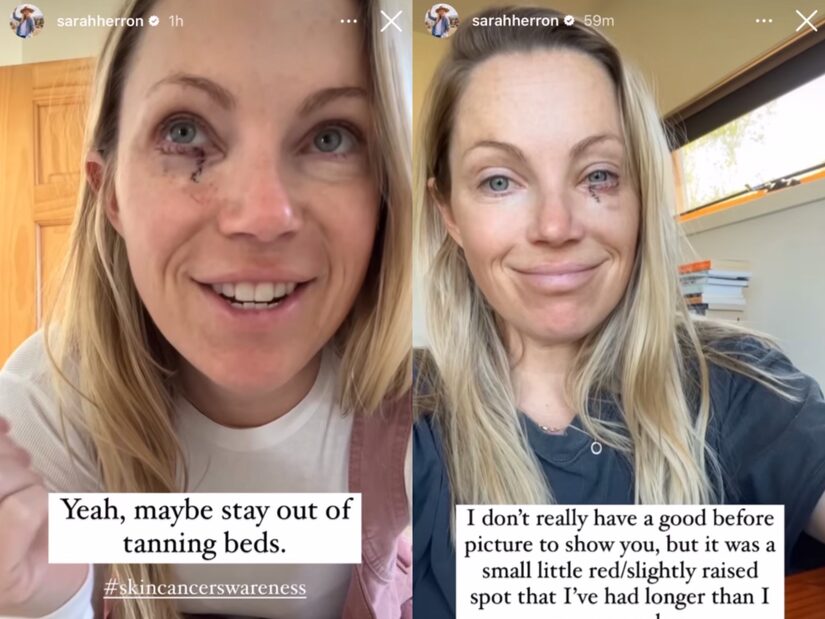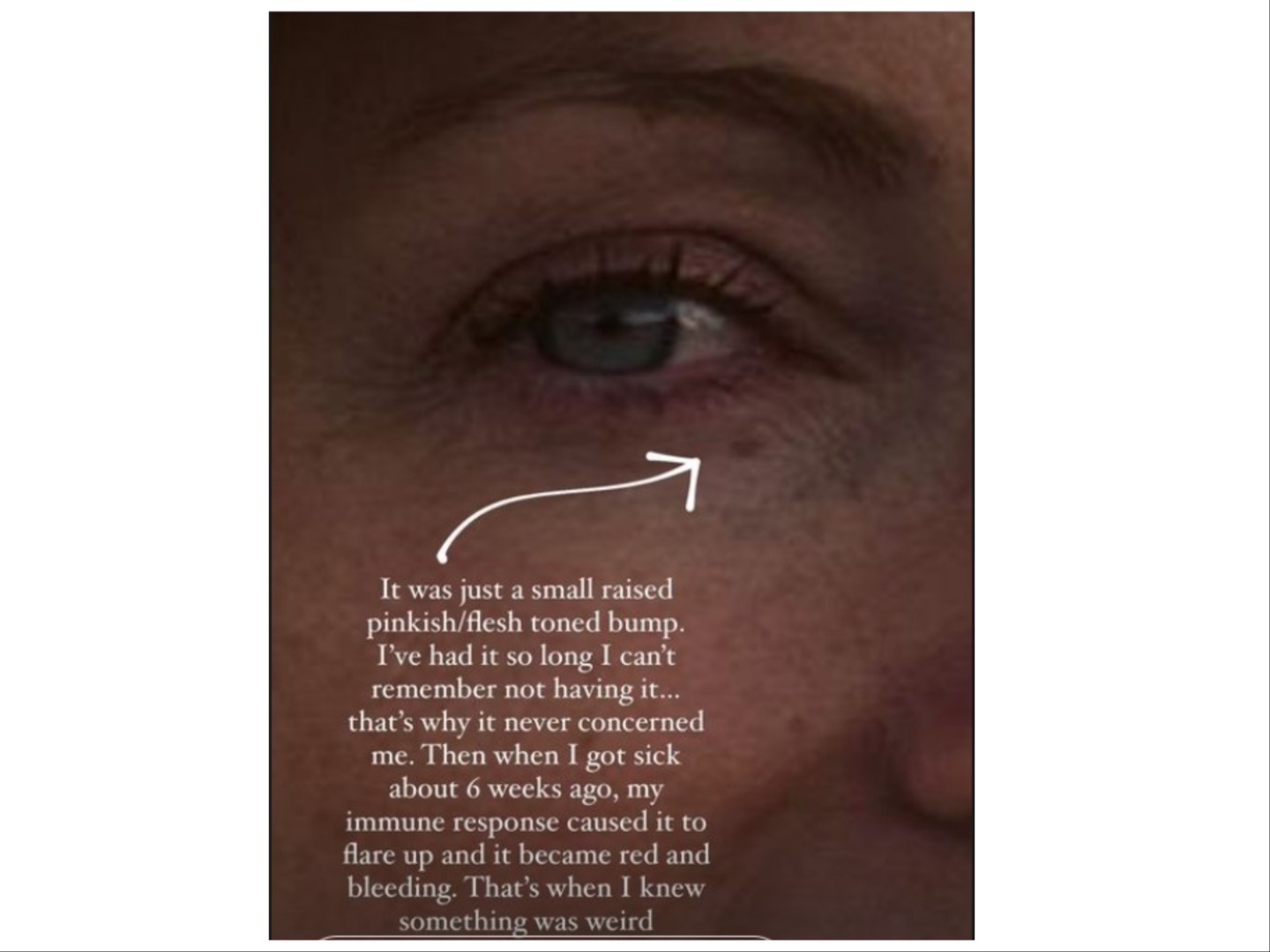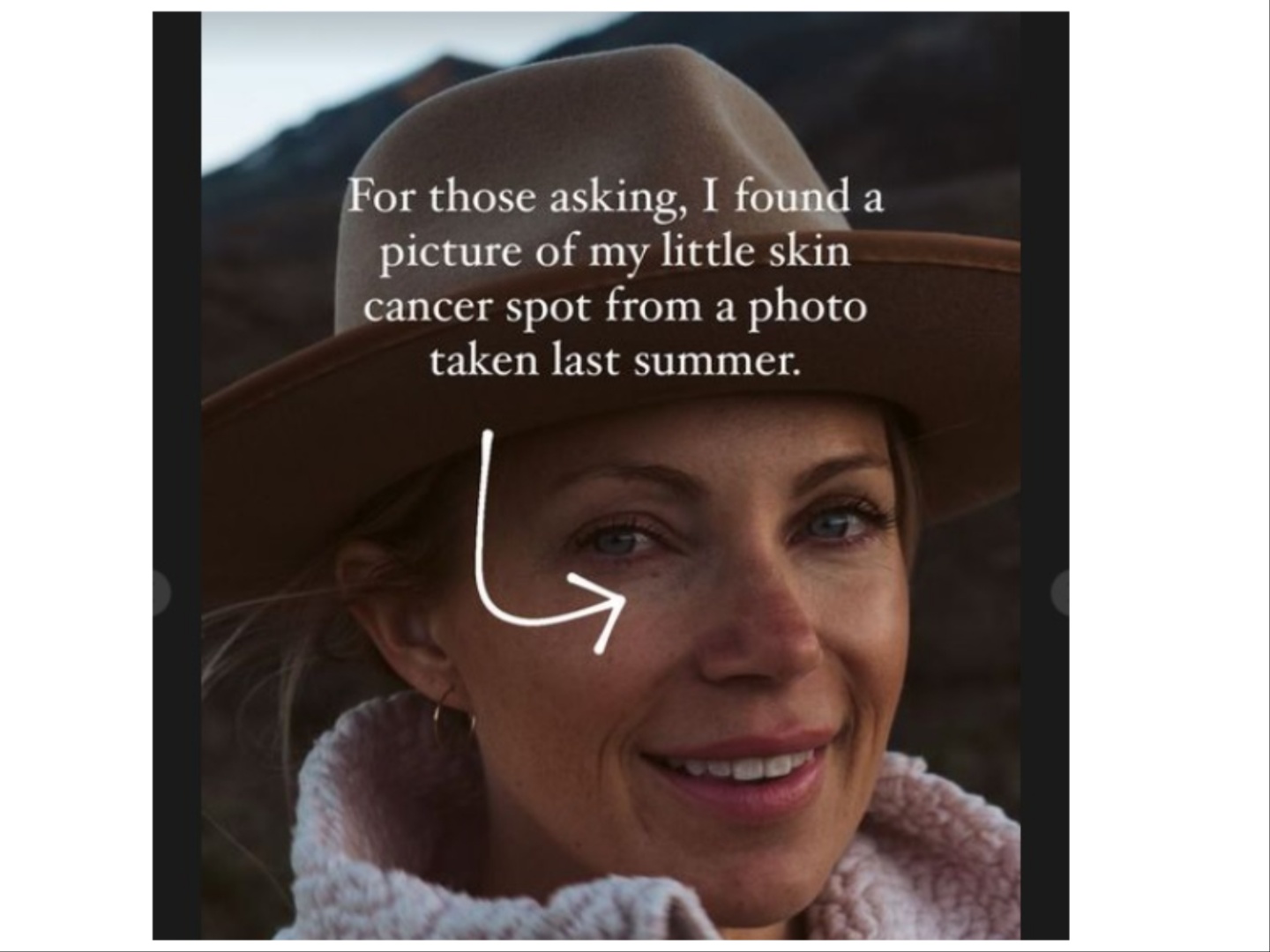Spotting Basal Cell Carcinoma
- "The Bachelor" reality TV star Sarah Herron, 36, revealed a long scar on her face from having skin cancer surgery.
- It was determined to be basal cell carcinoma, the most common form of skin cancer.
- BCC causes a lump, bump, or lesion to form on the outer layer of your skin, according to the Cleveland Clinic.
- A change to your DNA causes BCC and the change usually happens after your skin has been exposed to too much ultraviolet (UV) rays from the sun or tanning beds.
- Safer alternatives to tanning beds include spray tans and sunless tanning lotions.
"The Bachelor" star Sarah Herron, 36, has revealed a long scar on her face after having skin cancer surgery. Saying the cancer had been hiding in plain sight for years, she warned her followers to “stay out of tanning beds,” which can dangerously increase your risk of cancer.
"It was just a small raised pinkish/flesh-toned bump. I've had it so long I can't remember not having it," Herron wrote in an Instagram story.

(Photo: A screenshot captured by BachelorNation from Instagram/SarahHerron)
And she can now add "cancer survivor" to the list.
"I was at my dermatologist having my stitches checked for another skin cancer he removed, and I asked him to check the one under my eye and he said that it looked like another basal cell [carcinoma]," Herron said according to Bachelor Nation, an online outlet focused on "The Bachelor" brand.
Herron said she had the skin cancer for "four to five years" and thought it was "a wart." The cancer made itself more noticeable when she fell ill this past April.

"When I got sick about 6 weeks ago, my immune response caused it to flare up and it became red and bleeding. That's when I knew something was weird," she wrote in an Instagram story.
After getting the anomaly checked by her doctor, it was determined to be cancer and she had surgery to remove it.
"Even though where the incision was only the size of a pencil eraser, in order to close the incision, they had to make a long cut under my eye and a long cut along my eyelashes to create this triangular flap that they could pull over the incision to close it up," Herron said.

"Yeah, maybe stay out of tanning beds #SkinCancerAwareness," she added.
What's Basal Cell Carcinoma (BCC)?
Basal cell carcinoma is the most common form of skin cancer with an estimated 3.6 million cases diagnosed in the U.S. each year, according to the Skin Cancer Foundation.
BCC causes a lump, bump, or lesion to form on the outer layer of your skin, according to the Cleveland Clinic. A change to your DNA causes BCC and the change usually happens after your skin has been exposed to too much ultraviolet (UV) rays from the sun or tanning beds.
WATCH: The Sun is Not Your Friend Most Melanomas are Caused by Sun Exposure.
BCC is usually diagnosed after your doctor conducts a biopsy. If the BCC goes untreated, it can grow and affect deeper layers of the skin and tissues.
According to Mayo Clinic, surgery is commonly used to remove basal cell carcinoma. The procedure involves cutting out the cancerous lesion.
Another procedure is called, Mohs surgery, which removes the cancer layer by layer until all abnormal cells are gone.
BCC may appear like a pimple or skin tag. Mayo Clinic helps us know what to look for when suspecting BCC.
- A shiny, skin-colored bump that's translucent, meaning you can see a bit through the surface. The bump can look pearly white or pink on white skin.
- BCC on Darker Skin-tones the bump often looks brown or glossy black. Tiny blood vessels might be visible, though they may be difficult to see on brown and Black skin. The bump may bleed and scab over.
- A brown, black, or blue lesion or a lesion with dark spots with a slightly raised, translucent border.
- A flat, scaly patch with a raised edge. Over time, these patches can grow quite large.
- A white, waxy, scar-like
How Does Tanning Beds Influence BCC?
Indoor tanning beds emit a type of UV ray, and UV exposure can increase the risk of skin cancer, according to the Food and Drug Administration.
Remember, the sun also emits UV rays. Spending too much time in the sun unprotected also has consequences.
The National Center for Biotechnology Information published a 2011 study by Yale Cancer Center researchers examining indoor tanning and the risk of early-onset basal cell carcinoma.
The study concluded tanning beds were a "strong risk factor."
Researchers of the study said young people who tanned indoors had a "69% increased risk of early onset BCC."
"Indoor tanning was strikingly common in our study of young skin cancer patients, especially in the women, which may partially explain why 70% of early-onset BCCs occur in females," researcher Susan T. Mayne said to Yale Daily News.
Expert Skin Cancer Prevention Tips
The American Academy of Dermatology says that just one indoor tanning session can increase the risk of melanoma (the most dangerous type of skin cancer) by 20%. A single indoor tanning session can increase your chance of getting squamous cell carcinoma (another type of skin cancer) by 67%.
A study published in Cancer, a peer-reviewed journal of the American Cancer Society, suggests if minors eliminated the use of tanning beds that would prevent thousands of cases of melanoma in adolescents. The move would also save millions of dollars in healthcare costs.
"Studies have shown that exposure to tanning beds increases the risk of skin cancer and ocular cancer," says Dr. Lynn A. Cornelius, chief of the Division of Dermatology at Washington University School of Medicine in St. Louis.
"It also induces changes that lead to premature aging of the skin. There is no 'safe' tanning bed," Dr. Cornelius added.
For safer alternatives to tanning beds, Dr. Cornelius says to use spray tans and sunless tanning lotions.
While "one should take precautions not to inhale the product when getting a spray tan," she said, "skin allergic reactions are rare."
Learn more about SurvivorNet's rigorous medical review process.
